The battery voltage chart is an essential tool for managing and using lithium ion batteries. It visually represents voltage variations during charging and discharging processes, with time as the horizontal axis and voltage as the vertical axis. By recording and analyzing this data, users can gain a better understanding of the battery's status and behavior, enabling them to take appropriate measures to enhance efficiency and reliability.
To ensure optimal performance, it is essential to charge the battery with a specific voltage and current; insufficient charging voltage will result in reduced capacity, while excessive charging voltage may damage the battery. Typically, a typical representation on a battery voltage chart shows that its voltage gradually decreases over time until depletion during discharge, increases until full capacity is reached, and then remains stable during charging.
Lithium-ion batteries include NCM lithium-ion batteries and LiFePO4 batteries; Below are their respective charge-discharge voltage charts.
NCM Lithium ion Battery Cell:
▶ Charging Voltage Chart
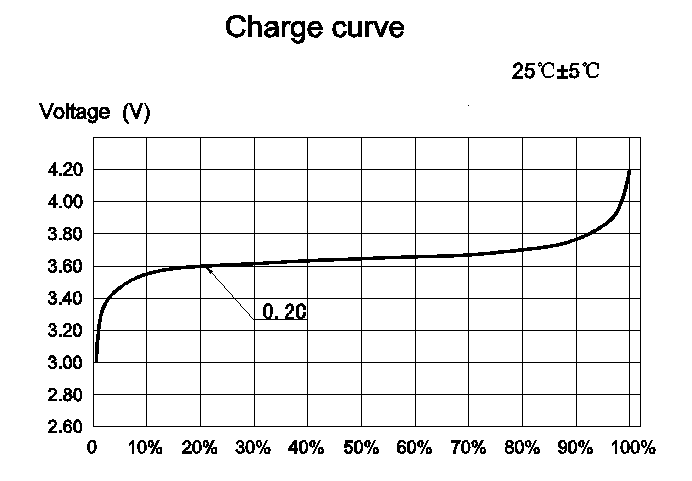
▶ Discharging Voltage Chart
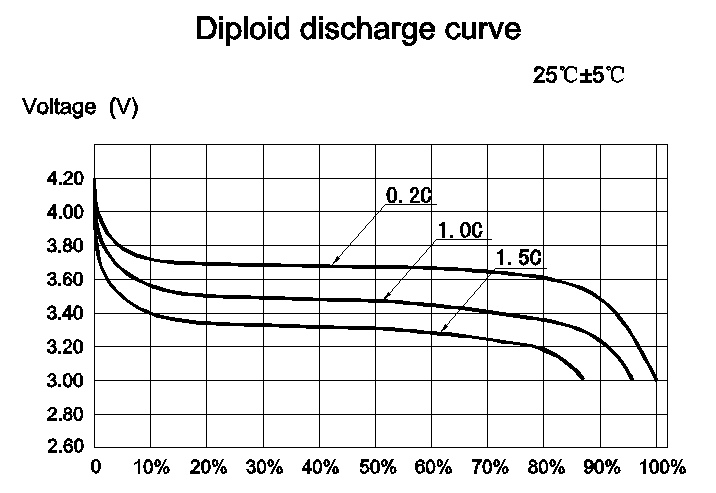
LiFePO4 Lithium Battery Cell:
▶ Charging Voltage Chart
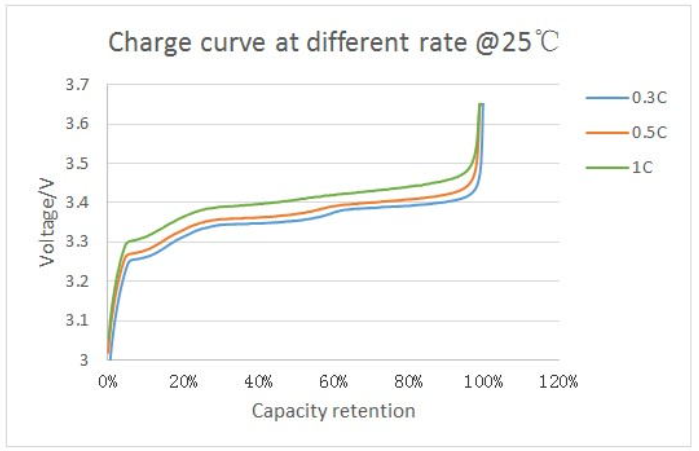
▶ Discharge Voltage Chart
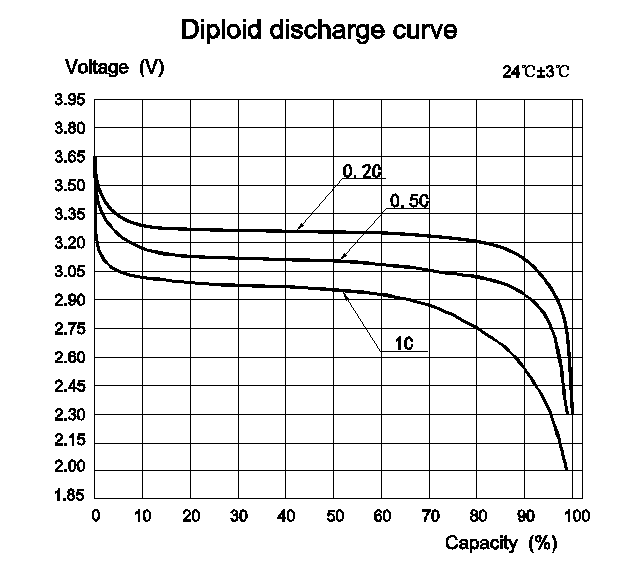
Today, more homeowners are opting for 48V LiFePO4 battery energy storage systems for their home solar PV systems. In order to further monitor, diagnose, and optimize their own status effectively, it is essential to have knowledge of the 48V lithium-ion Battery Voltage Chart.
The following is the charging and discharging voltage chart of the 48V LiFePO4 battery:

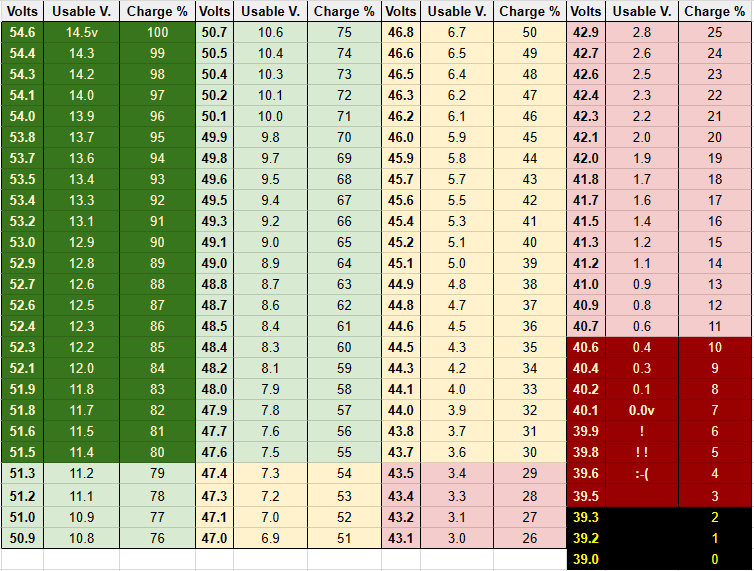
▶ 48V LiFePO4 Battery Charging Voltage Chart
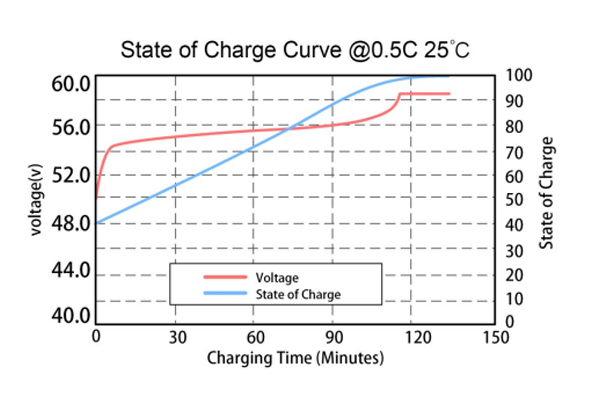
▶ 48V LiFePO4 Battery Discharging Voltage Chart
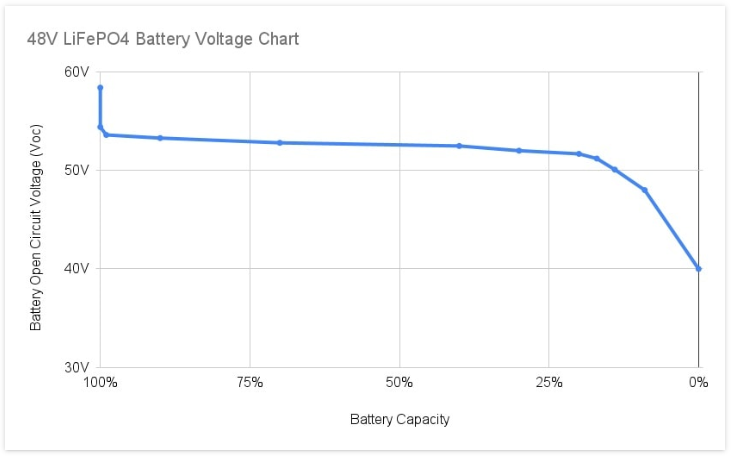
The battery's State of Charge (SoC) can be quickly assessed by referring to this 48V LiFePO4 voltage chart.
YouthPOWER offers high quality and durable 24V, 48V, and high voltage LiFePO4 lithium ion battery storage systems for residential and commercial solar energy applications. Here are voltage charts specifically for our 48V LiFePO4 lithium ion battery storage systems.
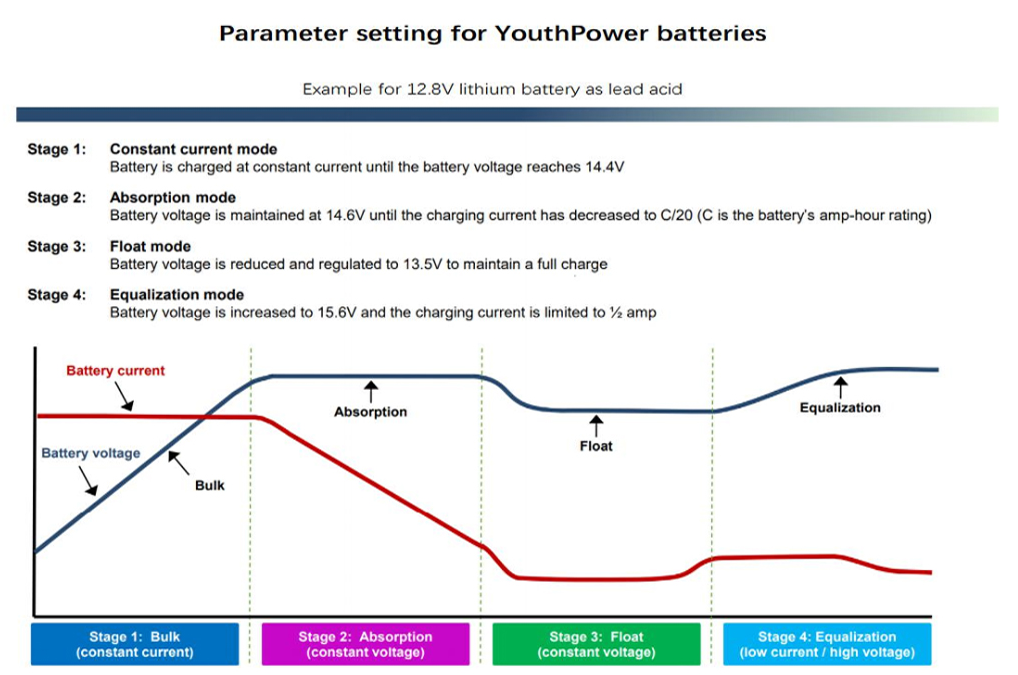
Inverter Setting for Standard 15S 48V Lithium Battery
| Inverter | 80%DOD,6000 cycles | 90-100%DOD,4000 cycles |
| Constant current mode charge voltage |
51.8 |
52.5 |
| Absorb Voltage |
51.8 |
52.5 |
| Float Voltage |
51.8 |
52.5 |
| Equalization Voltage |
53.2 |
53.2 |
| Fully charge Voltage |
53.2 |
53.2 |
| AC Input Mode |
Grid Tired/Off grid /Hybrid Type |
|
| Cut Off Voltage |
45.0 |
45.0 |
| BMS Protection Voltage |
42.0 |
42.0 |
Inverter Setting for Standard 16S 51.2V Lithium Battery
| Inverter | 80%DOD,6000 cycles | 90-100%DOD,4000 cycles |
|
Constant current mode charge voltage |
55.2 |
56.0 |
|
Absorb Voltage |
55.2 |
56.0 |
|
Float Voltage |
55.2 |
56.0 |
|
Equalization Voltage |
56.8 |
56.8 |
|
Fully charge Voltage |
56.8 |
56.8 |
|
AC Input Mode |
Grid Tired/Off grid /Hybrid Type |
|
|
Cut Off Voltage |
48.0 |
48.0 |
|
BMS Protection Voltage |
45.0 |
45.0 |
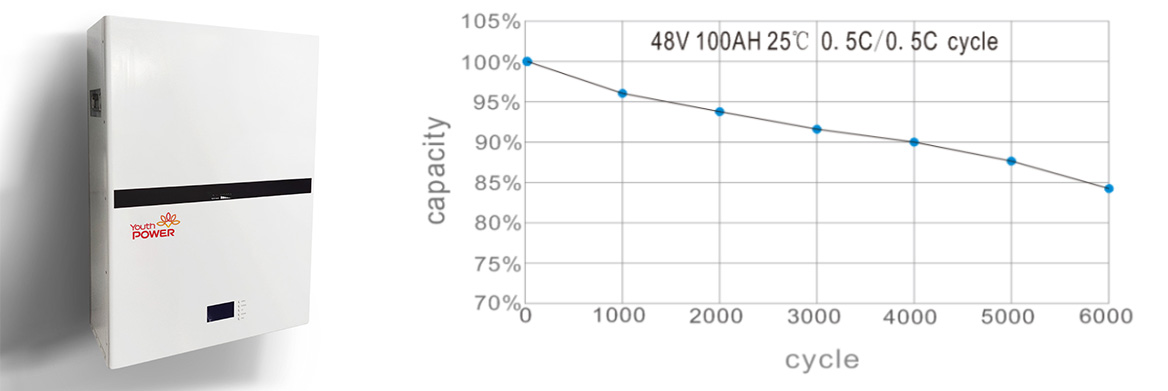
Share the remaining voltage status after our customers' 48V 100Ah wall and rack batteries have completed 1245 and 1490 cycles.

The above voltage charts can provide customers with a comprehensive understanding of our 48V LiFePO4 solar battery storage system. YouthPOWER solar batteries are tailored to meet the needs of customers who are looking for high-quality, durable and cost-effective solar energy solutions.
Post time: Apr-24-2024

